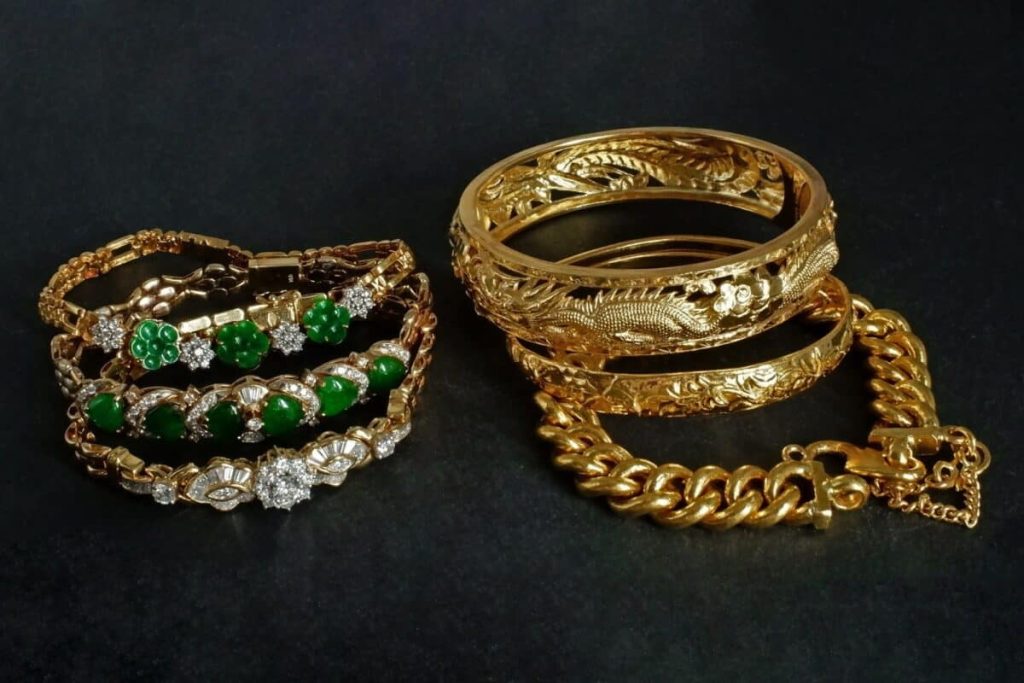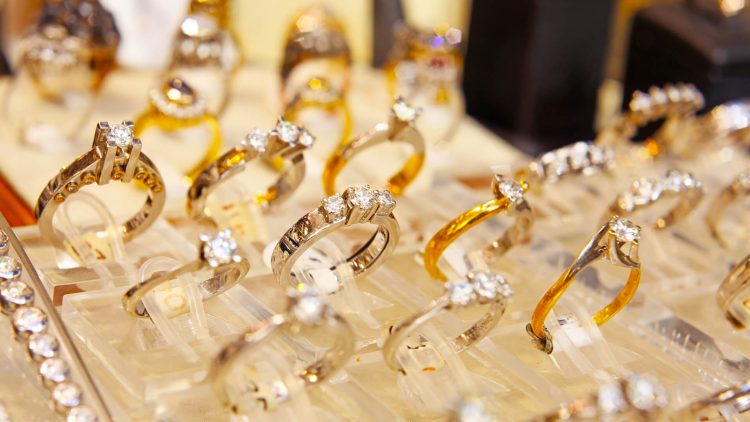Gold jewelry, often celebrated for its beauty and cultural significance, also holds substantial financial value. Over the last century, it has served not only as a decorative asset but as a quiet, enduring investment. Its combination of intrinsic metal value, artistry, and cultural heritage has ensured its place in the portfolios of collectors and investors alike. While much has been written about gold bullion and coins, gold jewelry offers a unique blend of utility and long-term appreciation that deserves a closer look. This article explores historical price data, compares gold jewelry’s value trajectory to other gold formats, examines how craftsmanship and branding influence pricing, and looks ahead to its future investment potential.
Historical Data on the Price of Gold Jewelry Over the Last Century
Gold jewelry’s historical pricing is intricately tied to the price of gold itself. Looking back a hundred years, gold was priced at around $20.67 per ounce in 1925. Fast forward to 1971—the year President Nixon untethered the U.S. dollar from gold—and the price began to climb sharply, reaching over $800 per ounce by 1980 during a time of high inflation and geopolitical tension. By 2000, gold stabilized near $275, before entering a massive bull run that peaked near $1,900 in 2011, driven by the financial crisis and global uncertainty. In 2024, gold has touched highs around $2,300 per ounce, with experts projecting further upside due to global instability and central bank accumulation.
Gold jewelry prices reflect this trajectory but include other pricing layers. Jewelry incorporates not only the raw gold price but also design, labor, craftsmanship, and retail markups. This means that while gold bullion’s price can be tracked closely by market indices, jewelry value rises at a pace that reflects both gold’s market trend and consumer behavior. For example, a basic 18k gold necklace purchased in the 1950s might have cost $50. Today, a similar item could command $2,000 or more—not just due to gold’s higher spot price but also inflation, design prestige, and rarity.
Luxury vintage jewelry pieces from the Art Deco period or mid-20th century are now auctioned at premiums significantly higher than their gold content alone would suggest. For example, a Cartier gold bracelet from the 1960s might sell for 10 to 20 times its metal weight, showcasing how time, design, and provenance contribute to appreciation.
How Gold Jewelry Has Appreciated in Value Compared to Other Forms of Gold
Comparing gold jewelry to other gold forms—bullion, ETFs, and coins—reveals a mixed but compelling picture. Gold bullion, bought for investment purposes, tracks the gold spot price directly. ETFs like SPDR Gold Shares (GLD) offer paper exposure to gold’s price but lack physical possession. Gold coins, especially rare or limited-edition mintages, carry numismatic premiums. Jewelry, however, lives in its own unique category. It’s wearable wealth—something that can be adorned daily, passed through generations, and resold with relative ease.
Historically, jewelry’s appreciation lags slightly behind bullion on a pure percentage basis, primarily due to markups at purchase. A gold bracelet may include 30–100% premiums over raw gold value, which can take years to recover. However, in the long run, especially with iconic or vintage items, the value curve flattens and begins to reflect compounded growth. For instance, while gold itself appreciated roughly 500% from 1980 to 2024, iconic jewelry pieces from brands like Van Cleef & Arpels or Bulgari have appreciated even more significantly due to rising collector demand and the brand effect.
The key differentiator lies in liquidity and market interest. Bullion offers faster, more transparent liquidation, while jewelry requires buyers who appreciate its artistic and collectible appeal. Yet in times of crisis or currency devaluation—as seen in countries like Venezuela, Zimbabwe, or Turkey—gold jewelry often becomes a more practical means of wealth transfer and emergency liquidity, particularly among families.

The Role of Craftsmanship and Brand in Jewelry Price History
Craftsmanship and branding have played critical roles in determining the appreciation of gold jewelry over time. A plain gold bangle and a finely crafted Van Cleef & Arpels “Alhambra” bracelet, despite containing similar amounts of gold, have dramatically different valuations. The former is valued mostly by gold weight, the latter by artistry, scarcity, and brand reputation.
Brands like Cartier, Tiffany & Co., Boucheron, and Chopard have elevated gold jewelry into the realm of investment art. Their pieces often include serial numbers, certificates, and distinctive design elements that enhance long-term value. In the vintage market, signed pieces—those officially attributed to a specific luxury house—can appreciate faster than unsigned, generic items. Moreover, these pieces often defy fluctuations in gold prices because they attract a collector’s premium.
Craftsmanship is another pillar of value. Handmade pieces, with intricate filigree or engraving, often appreciate more than machine-made ones. Jewelry from culturally significant regions—like Indian temple jewelry or Ottoman gold pieces—can also command higher prices due to their artistic lineage.
Auctions from Christie’s or Sotheby’s frequently see significant premiums on jewelry with design provenance. A signed Cartier 18k gold necklace from the 1970s, originally priced at $3,000, might sell today for over $30,000, even if its gold content is worth only $5,000. These historical trends confirm that craftsmanship and branding contribute enormously to price resilience and growth.
Predicting the Future Investment Potential of High-Quality Gold Jewelry
As we move deeper into the 21st century, several macroeconomic and consumer trends suggest that high-quality gold jewelry will remain a sound investment. First, inflationary pressures remain persistent across global economies, increasing gold’s appeal as a store of value. Second, a growing number of consumers are seeking tangible, wearable assets that merge beauty with financial utility. This “dual purpose” appeal makes gold jewelry more resilient to market volatility compared to other luxury goods.
Third, sustainability and ethical sourcing are becoming essential to younger generations. Brands that offer ethically sourced gold or vintage reworked collections are likely to see increased demand. This ESG-conscious consumer base is likely to invest more heavily in jewelry that reflects not only value but also values—a trend that should buoy the resale and collector’s market for high-quality gold items.
Digitization is another key driver. Online platforms such as 1stDibs, The RealReal, and Sotheby’s online auctions have democratized access to investment-grade gold jewelry, increasing liquidity and price transparency. As technology continues to merge with luxury, expect a more active and accessible resale market for authenticated jewelry.
Experts predict that by 2030, certain gold jewelry categories—especially those by iconic brands, limited editions, or featuring cultural motifs—will appreciate faster than generic bullion. This is due to increasing global wealth, the shift toward tangible assets, and collector interest in design history. Additionally, as global central banks continue to accumulate gold reserves, the metal’s intrinsic value is unlikely to fall dramatically, further underpinning the jewelry sector.
In conclusion, while gold jewelry may not offer the rapid returns of speculative investments, its slow, steady, and stylish appreciation makes it an exceptional long-term asset. With the added benefits of personal enjoyment and cultural significance, high-quality gold jewelry continues to glitter as both an adornment and an anchor of wealth. Investors looking for diversification, inflation protection, and artistic value would do well to include gold jewelry in their portfolio—especially the kind that comes with craftsmanship, a story, and a timeless brand.
































